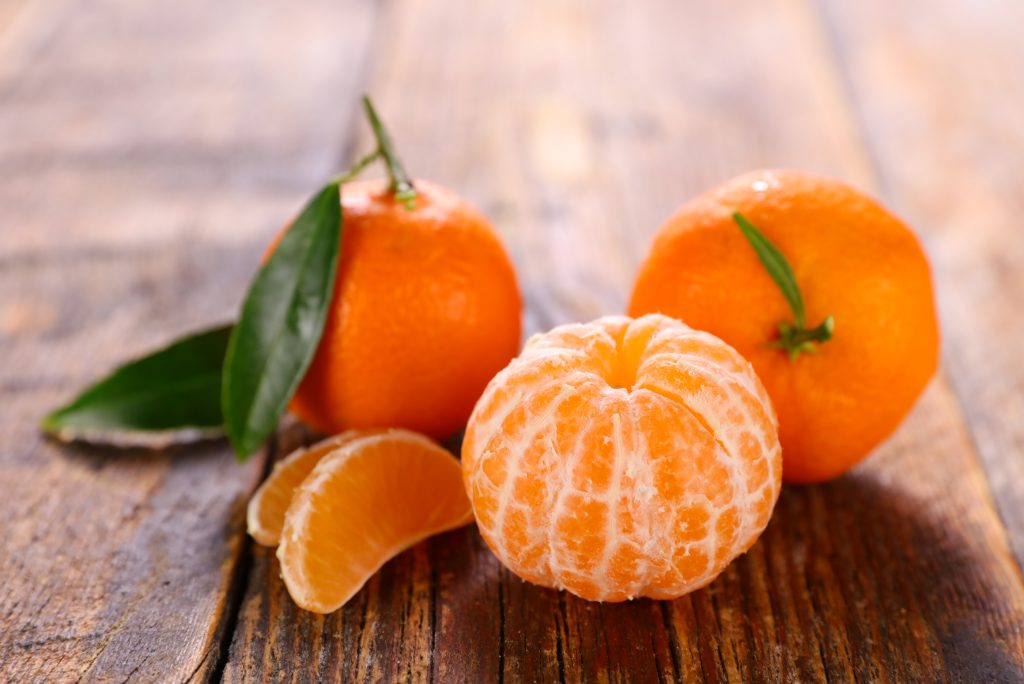Clementines are small, easy-peeling citrus fruit often sold in winter. They are a hybrid of mandarins and sweet oranges, known for their sweet flavor and bright orange color. Clementines also have many health benefits, being a good source of vitamin C and other vital nutrients, making them a great snack option.
Table of Contents
What is a Clementine?
Clementine is a type of citrus fruit that is similar to mandarin oranges. It is also known as the Algerian tangerine or the seedless tangerine. Clementines are small and round, with bright, glossy, deep orange skin that is easy to peel. They are typically around 2-3 inches in diameter and have sweet, juicy flesh.
Clementines are believed to have originated in Algeria in the 19th century and were named after a French missionary named Father Clément. Today, they are primarily grown in Spain, Morocco, and the United States, particularly in California.
The flavor of clementines is often described as a mix of sweet and tangy, with honey and floral undertones. They are a popular snack in salads, desserts, and cocktails. They are also a good source of vitamin C, fiber, and potassium.
Their high content of essential oils like myrcene, linalool, and limonene gives them a powerful and aromatic smell.
The History of Clementines
The clementine was not intentionally created but emerged naturally as a hybrid in Misserghin, Algeria, in the late 1800s. This fruit grew in the orphanage of French Missionary Brother Clément Rodier and eventually became known as the clementine in the 19th century.
Although some believe that a similar fruit found in China could have influenced its development, genetic research has shown that the clementine’s parentage is a mix of sweet orange and Mediterranean willowleaf mandarin.

What Does a Clementine Taste Like?
Clementines are typically eaten raw and have a sweet, honey-like, and slightly tangy flavor.
When cooked, Clementines can have a more intense and concentrated flavor and may become slightly sweeter. For example, roasted clementines can have a caramelized flavor that pairs well with savory dishes. Clementine marmalade can have a more complex and tangy flavor that is great for spreading on toast or using in baking.
How to Tell When Clementines are Ripe
Here are some tips on how to tell when clementines are ripe and how to select the best ones when shopping:
| Color | When clementines are ripe, their skin turns bright orange. Avoid fruit with green or yellow patches on the skin, as this indicates it is not fully mature. |
| Firmness | Gently squeeze the fruit to check its firmness. A ripe clementine should be firm but slightly soft to the touch. It may not be ripe if it feels too hard or too soft. |
| Smell | Ripe clementines have a sweet, citrusy aroma. It may not be ripe if you can’t smell anything or if the fruit has a sour or unpleasant odor. |
| Bruising | Avoid any fruit with bruises, cuts, or other signs of damage on the skin. This can indicate that the fruit is past its prime or has been mishandled. |
Are Clementines and Mandarins Related?
Yes, clementines and mandarins are related. Clementines are a hybrid of mandarins and sweet oranges, while mandarins are a type of citrus fruit that belongs to the same family as oranges, lemons, and grapefruits.
The primary differences between clementines and mandarins are their size, taste, and seed content. Clementines are smaller and sweeter than mandarins, with thinner, smoother skin that is easier to peel. They are also seedless, while mandarins may contain seeds.
Other common types of mandarins include Satsumas, tangerines, and tangors. Satsumas are another small, seedless mandarin that is closely related to clementines. Tangerines are slightly larger and have more textured skin, while tangors are a hybrid of tangerines and oranges.
All of these citrus fruits are members of the Rutaceae family and are native to Southeast Asia.
Cooking with Clementines
Here’s how to prep your clementine before cooking:
- Peel off the skin: Use your fingers to gently pull away the skin from the flesh of the clementine, following the natural segments. If the skin is stubborn, use a knife or your fingernail to loosen it.
- Remove any remaining white pith: Once you have peeled off the skin, check to see if any white pith remains on the fruit. If there is, use a knife to scrape it away gently.
Clementines are often used in Mediterranean and Middle Eastern cuisine. In these regions, they are used in both sweet and savory dishes. You can also use clementines to make jams, marmalades, and chutneys. They can be eaten raw as a snack, juiced for a refreshing drink, or added to smoothies and cocktails.

Some popular dishes that feature clementines include:
Jerusalem Roast Chicken with Clementines: This dish is a flavorful and hearty roast made with chicken, clementines, onions, fennels, honey, and thyme. The clementines add a sweet and tangy flavor, complementing the savory chicken and ingredients.
Smoke salmon, fennel, and clementine salad: This salad is made with sliced clementines, fennel, pine nuts, fresh dill, and last but not least: smoked salmon. The clementines add a sweet and juicy element to the salad, the salmon has some intense smokiness, while the fennel and onion add a crunchy texture.
Clementine Upside-Down Cake: This cake is a delicious and impressive dessert made with caramelized clementines arranged in a beautiful pattern on top of a moist and fluffy cake. The clementines add a sweet and tangy flavor to the cake, making it a perfect dessert for any occasion.
Clementine Sunshine Smoothie: This is a powerhouse for immunity-boosting, and the combination of clementines with cream will satisfy your palate.
How to Store Clementines
Clementines can be stored at room temperature for a few days and up to a week, but they will lose their freshness and flavor after a day or two.
Storing clementines in the refrigerator is the best way to keep them fresh for an extended period. Place them in a perforated plastic bag or the refrigerator’s crisper drawer, away from other fruits and vegetables.
Clementines stored in the fridge can last for up to three weeks. However, peeling or sectioning them before will make them last less – about 3 to 4 days.
Lastly, clementines can also be frozen but will lose their texture and become mushy when thawed. To freeze clementines, peel and remove the seeds and place the segments in a freezer-safe bag or container. You can keep them frozen for up to six months.

Nutritional Benefits of Clementines
Clementines contain antioxidants like vitamin C, which can help protect your body from damage and inflammation. This can help prevent conditions like heart disease and diabetes. Clementines also contain other antioxidants like beta carotene and hesperidin, which have been shown to promote healthy cell growth and reduce inflammation in some studies.
Vitamin C, an abundant micronutrient in clementines, plays a role in collagen synthesis, keeping your skin plump and healthy. The antioxidants in clementines can also help reduce acne, redness, and other signs of inflammation on your skin.
Clementines are also a good source of fiber, which can benefit your gut health and help prevent conditions like constipation and diverticular disease. Eating fruit fiber has also been linked to a lower risk of type 2 diabetes and a healthier body weight.
However, there is a downside: Clementines may interfere with the use of some medication. For instance, furanocoumarins may amplify the effects of statins, which help lower cholesterol. If you are taking statins, it is usually advised to restrict your consumption of clementines.
Where to Purchase Clementines
Clementines are a popular citrus fruit typically available from November to January, although their peak season is from December to January. During this time, they can be found in many grocery stores, supermarkets, specialty food stores, and farmers’ markets.
If you want to buy clementines outside of their peak season, they may still be available at some specialty food stores or online retailers offering year-round fruit imports. Additionally, some farmer’s markets may have clementines during other times of the year if grown locally or imported from other regions.

